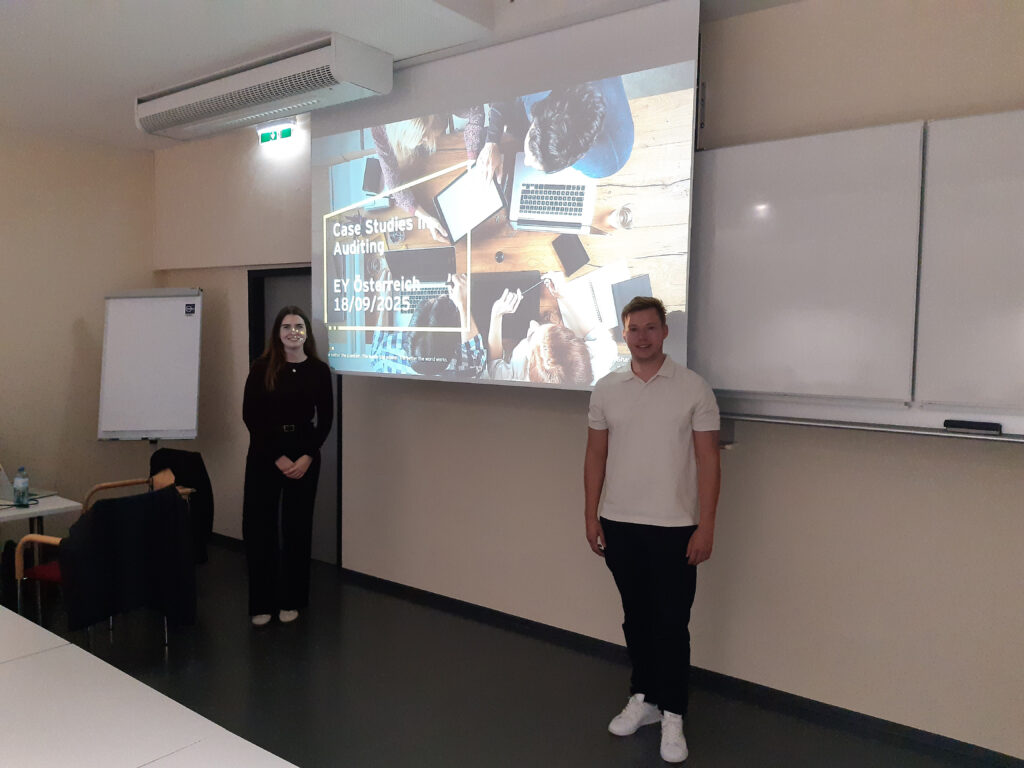How are balance sheets and income statements related in a complex real-world company, and how can discrepancies be identified?
Students in the third semester of the Bachelor’s program in Finance, Accounting & Taxation received practical answers to these questions as part of a case study in cooperation with EY (Ernst & Young), one of the world’s leading companies in the fields of auditing, tax consulting and management consulting. The lecturers introduced the participants to the working methods of auditors and explained fundamental topics such as auditing standards, materiality thresholds, error detection thresholds and the International Standards on Auditing (ISA). The students then had the opportunity to examine the case description and the documents provided.
Working in groups, participants developed solutions and discussed their findings. The focus was on the following aspects:
- Understanding balance sheets: How do you read and interpret balance sheets and profit and loss statements?
- Analysis of balance sheet items: From bank balances and currencies to authorized signatories
- Bank confirmations: Where do auditors obtain these important documents?
- Calculation of key figures: Practical exercises, e.g., to determine the equity ratio
- Calculation of materiality thresholds: How are these determined and what role do they play in the audit?
The practical case study highlighted the importance of analytical thinking, teamwork and critical questioning in the field of auditing. Emphasis was placed on the ability to apply knowledge from the areas of accounting, tax law and business administration in an interdisciplinary manner and to link it to practical situations. For the students, it was a special opportunity to apply theoretical knowledge directly and prepare for future challenges in their professional lives.
A particular highlight was the opportunity to discuss directly with experts from the field and gain valuable insights into the professional reality of auditing.
>> More information about the Bachelor’s program in Finance, Accounting & Taxation
